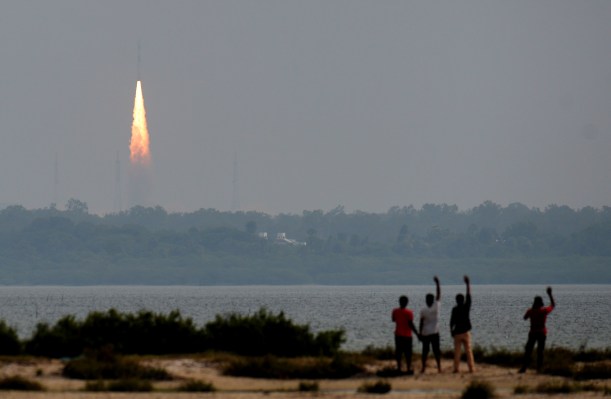India plans to have its own space station in the future and conduct separate missions to study the Sun and Venus, it said on Thursday, as the nation moves to bolster its status as a leader in space technologies and inspire the young minds to take an interest in scientific fields.
India’s space agency said today that it will begin working on its space station following its first manned mission to space, called Gaganyaan (which means “space vehicle” in Sanskrit), in 2022 — just in time to commemorate 75 years of the country’s independence from Britain. The government has sanctioned Rs 10,000 crores ($1.5 billion) for the Gaganyaan mission, it was unveiled today.
“We have to sustain the Gaganyaan program after the launch of the human space mission. In this context, India is planning to have its own space station,” said Dr. Kailasavadivoo Sivan, chairman of Indian Space Research Organization (ISRO). ISRO is India’s equivalent to NASA.
“While navigation, communication and Earth observation are going to be the bread and butter for us, it is missions such as Chandrayaan (Sanskrit for “moon vehicle”), Mangalyaan (Sanskrit for “Mars vehicle”) and Gaganyaan that excite the youth, unite the nation and also pave a technological seed for the future.”
“This is our ambition. We want to have a separate space station. We will launch a small module for conducting microgravity experiments,” he said in a press conference. Gaganyaan aims to send a crew of two to three people to space for a period of up to seven days. The spacecraft will be placed in low Earth orbit of 300-400 km (186-248 miles).
The agency will submit to the government after the Gaganyaan mission a detailed report on how it intends to set up the space station. It currently believes it would take five to seven years to conceptualize the space station.
On the sidelines of the announcement, ISRO also unveiled Aditya-L1, a mission to study the Sun’s corona that impacts the change in climate on Earth, for the first half of next year, and a similar mission aimed at Venus, which it plans to conduct over the next few years. “Not only Sun and moon, we hope to reach other planets, like Venus,” he said.
The ambitious announcements come a day after the space agency said it will launch a lunar mission on July 15 this year in an attempt to become only the fourth nation — after the United States, Russia and China — to land on the moon.
That mission, dubbed Chandrayaan-2, involves a lander, an orbiter and a rover that the agency has built itself. India concluded its first mission to the moon in 2008, when it completed more than 3,400 orbits and played an instrumental role in the discovery of water molecules on the moon.
India’s space agency has specialized in low-cost space launches since the early 1960s, when components of rockets were transported by bicycles and assembled by hand. In 2014, it sent a spacecraft to Mars for $74 million, significantly lower than the $671 million the U.S. spent for a Mars mission the same year. In early 2017, the nation launched a flock of 104 satellites into space over the course of 18 minutes, setting a new global record.
